|
|
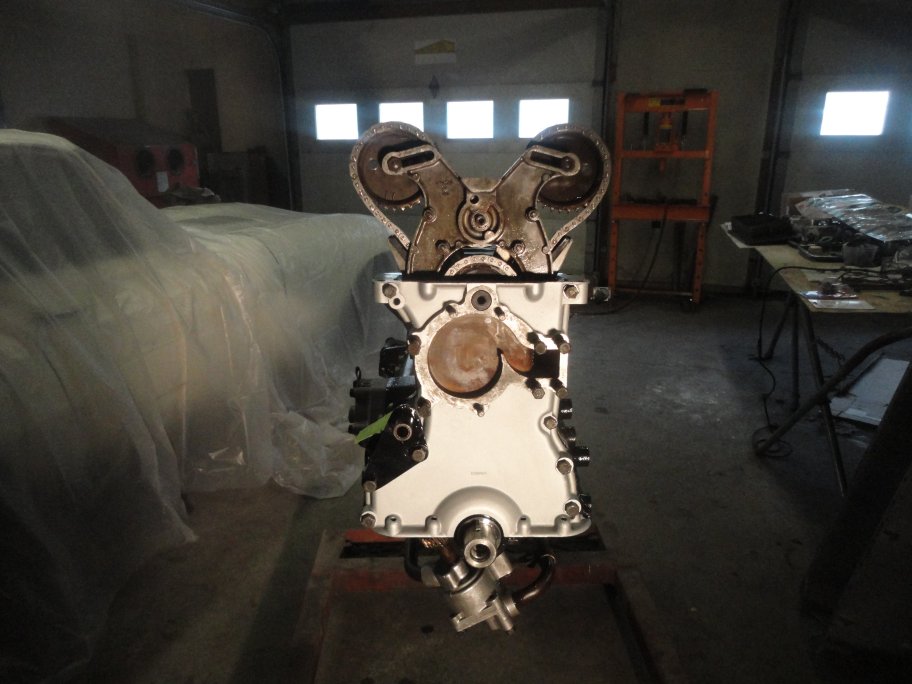 37) The timing cover went on rather uneventful. The upper right bolt (in this picture) is actually the mounting location for the generator bracket.
I used a spare bolt to tighten the cover down since I was not ready to install the bracket.
37) The timing cover went on rather uneventful. The upper right bolt (in this picture) is actually the mounting location for the generator bracket.
I used a spare bolt to tighten the cover down since I was not ready to install the bracket.
|
 38) The oil pan cleaned up rather nicely. All I did to dress it up was to soda blast the outside.
38) The oil pan cleaned up rather nicely. All I did to dress it up was to soda blast the outside.
|
 39) Four new studs were used at the bottom of the timing cover. A coat of indian head gasket sealer was applied to the underside of the gasket
and the mating surface on the block before the gasker was installed.
39) Four new studs were used at the bottom of the timing cover. A coat of indian head gasket sealer was applied to the underside of the gasket
and the mating surface on the block before the gasker was installed.
|
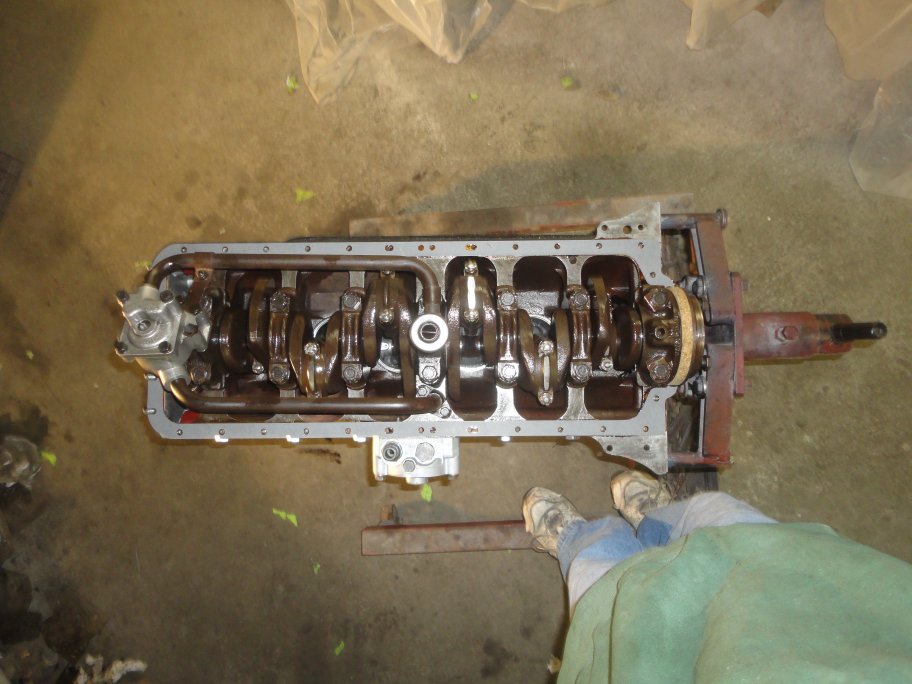 40) A cork gasket is used to seal oil pan at the rear main bearing cap. Sealant was only applied at the corners where the cork met the paper gasket.
40) A cork gasket is used to seal oil pan at the rear main bearing cap. Sealant was only applied at the corners where the cork met the paper gasket.
|
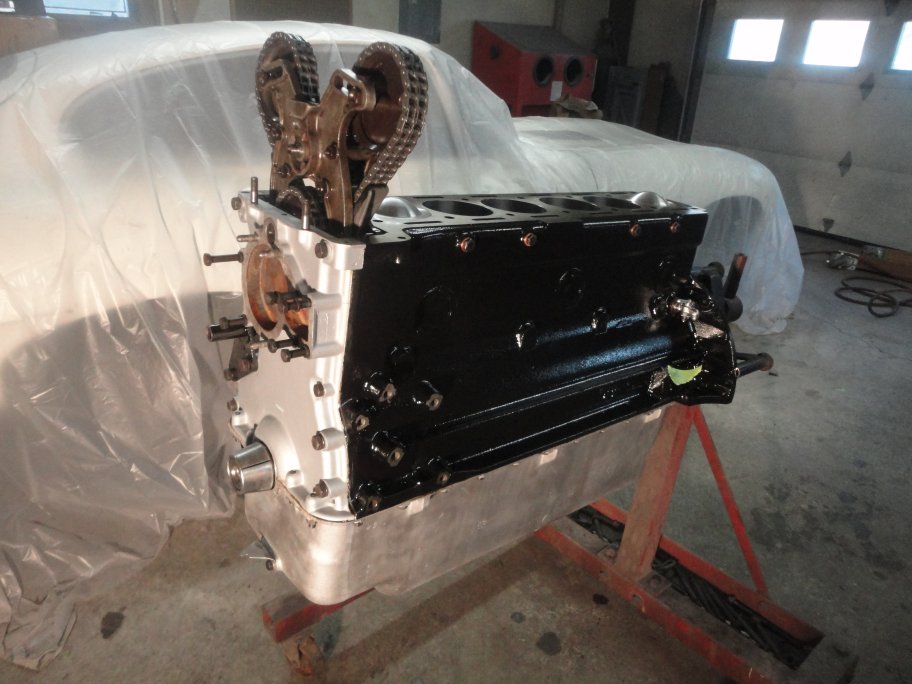 41) Here it is with the oil pan installed. Just a few items left before the head goes on.
41) Here it is with the oil pan installed. Just a few items left before the head goes on.
|
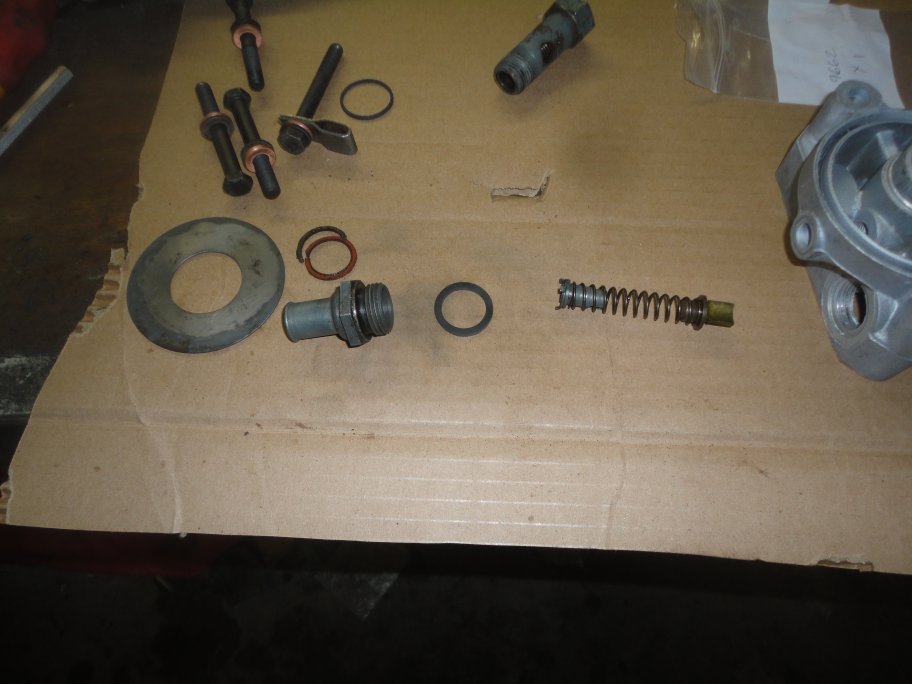 42) Here is the oil filter bracket and assiated components. All it really needed was some cleaning and new gaskets.
42) Here is the oil filter bracket and assiated components. All it really needed was some cleaning and new gaskets.
|
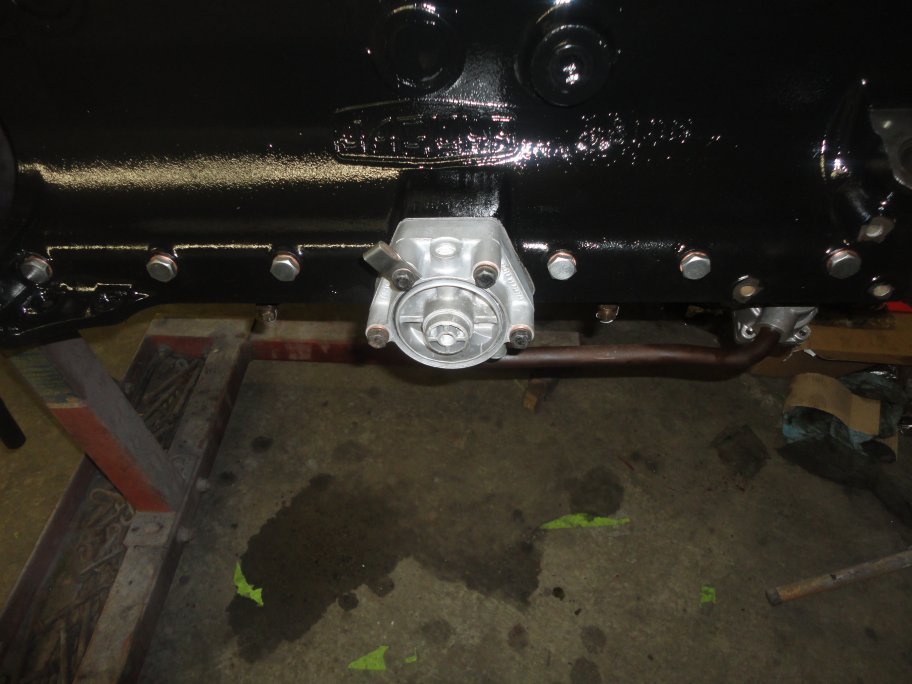 43) Here it is reassembled and installed. The bracket in the upper left hand corner (though it belongs on the bottom right corner) is used to capture
the carburator overflow pipes. It took me 5 years to discover what the bracket was for. The original overflow pipes were cut short and
I could not find a reference anywhere pertaining to the bracket. I just happened upon a picture on the web searching for something else. And now you know about it.
43) Here it is reassembled and installed. The bracket in the upper left hand corner (though it belongs on the bottom right corner) is used to capture
the carburator overflow pipes. It took me 5 years to discover what the bracket was for. The original overflow pipes were cut short and
I could not find a reference anywhere pertaining to the bracket. I just happened upon a picture on the web searching for something else. And now you know about it.
|
 44) The drain hose is simply attached with a couple cheney clamps.
44) The drain hose is simply attached with a couple cheney clamps.
|
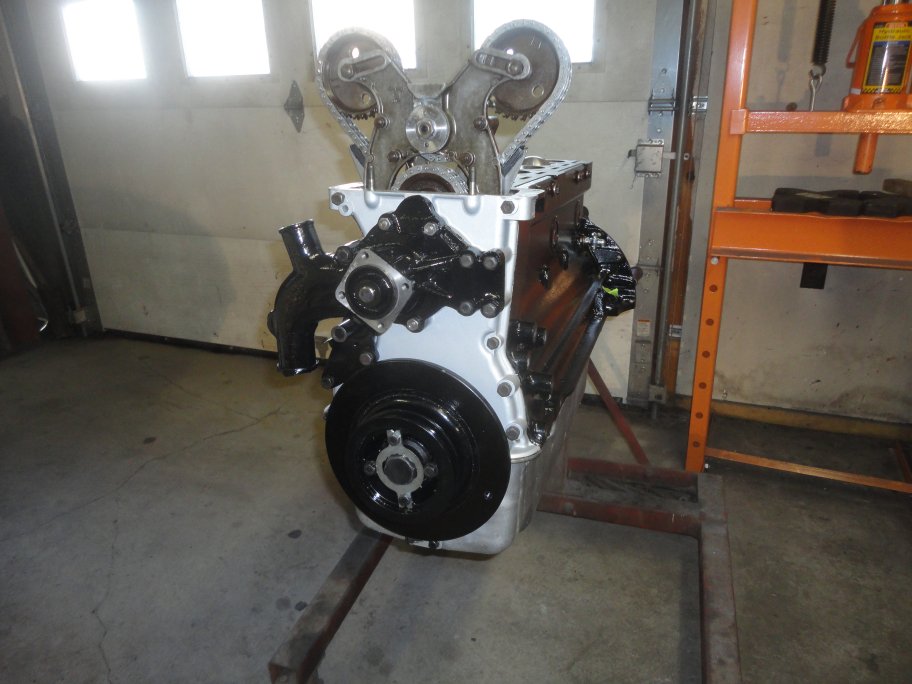 45) It's a simple matter to install the water pump and harmonic balancer. The new 2 groove crank pulley came in aluminum, but when it is painted black
you can't tell it from the original part once the engine is installed in the car.
45) It's a simple matter to install the water pump and harmonic balancer. The new 2 groove crank pulley came in aluminum, but when it is painted black
you can't tell it from the original part once the engine is installed in the car.
|
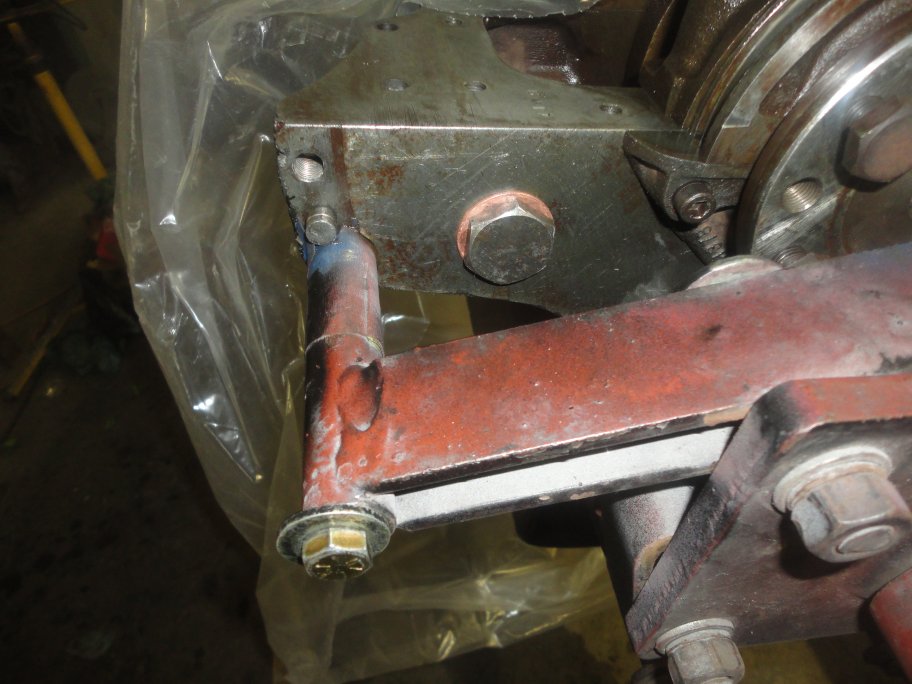 46) It's important not to overlook this plug before installing the flywheel.
46) It's important not to overlook this plug before installing the flywheel.
|